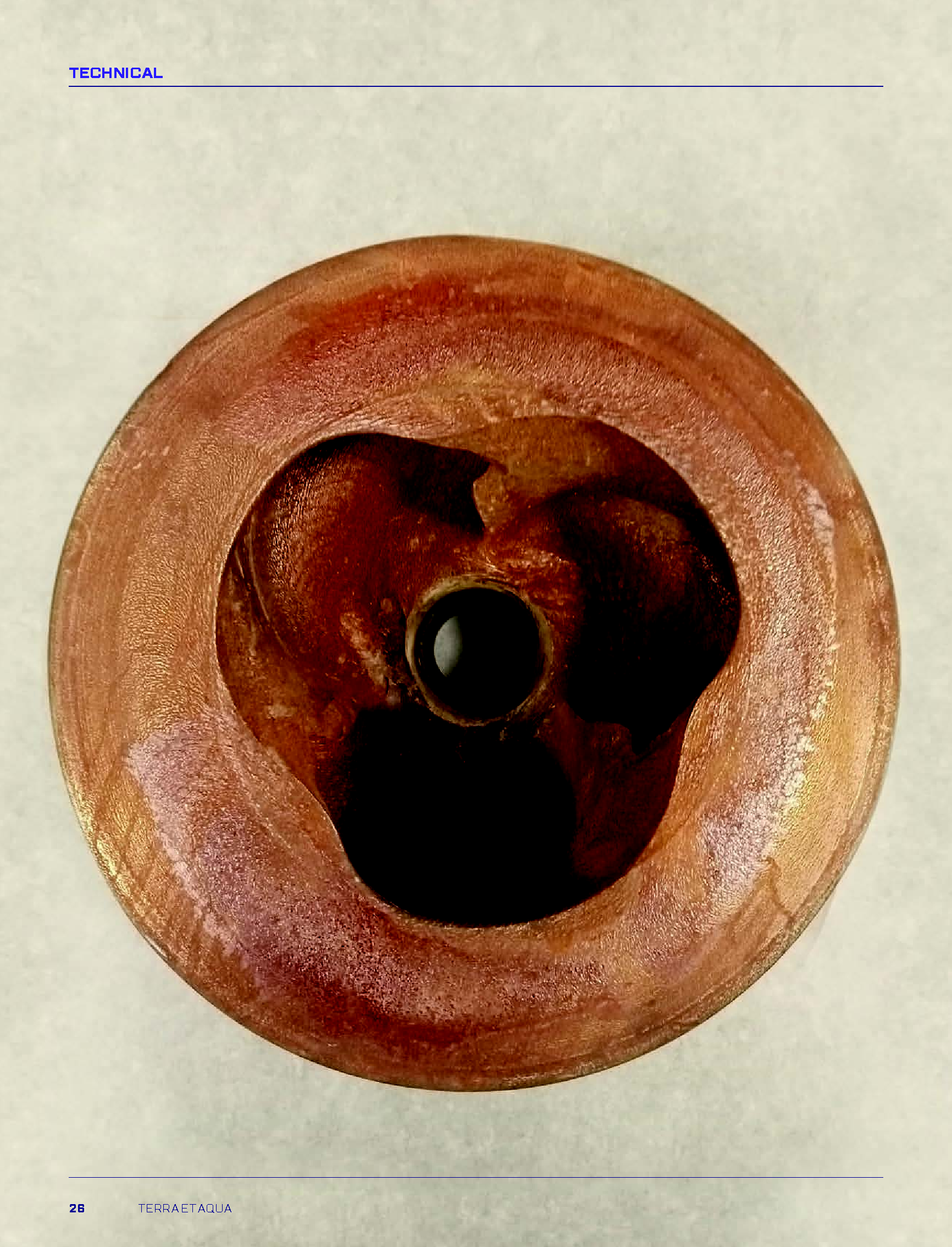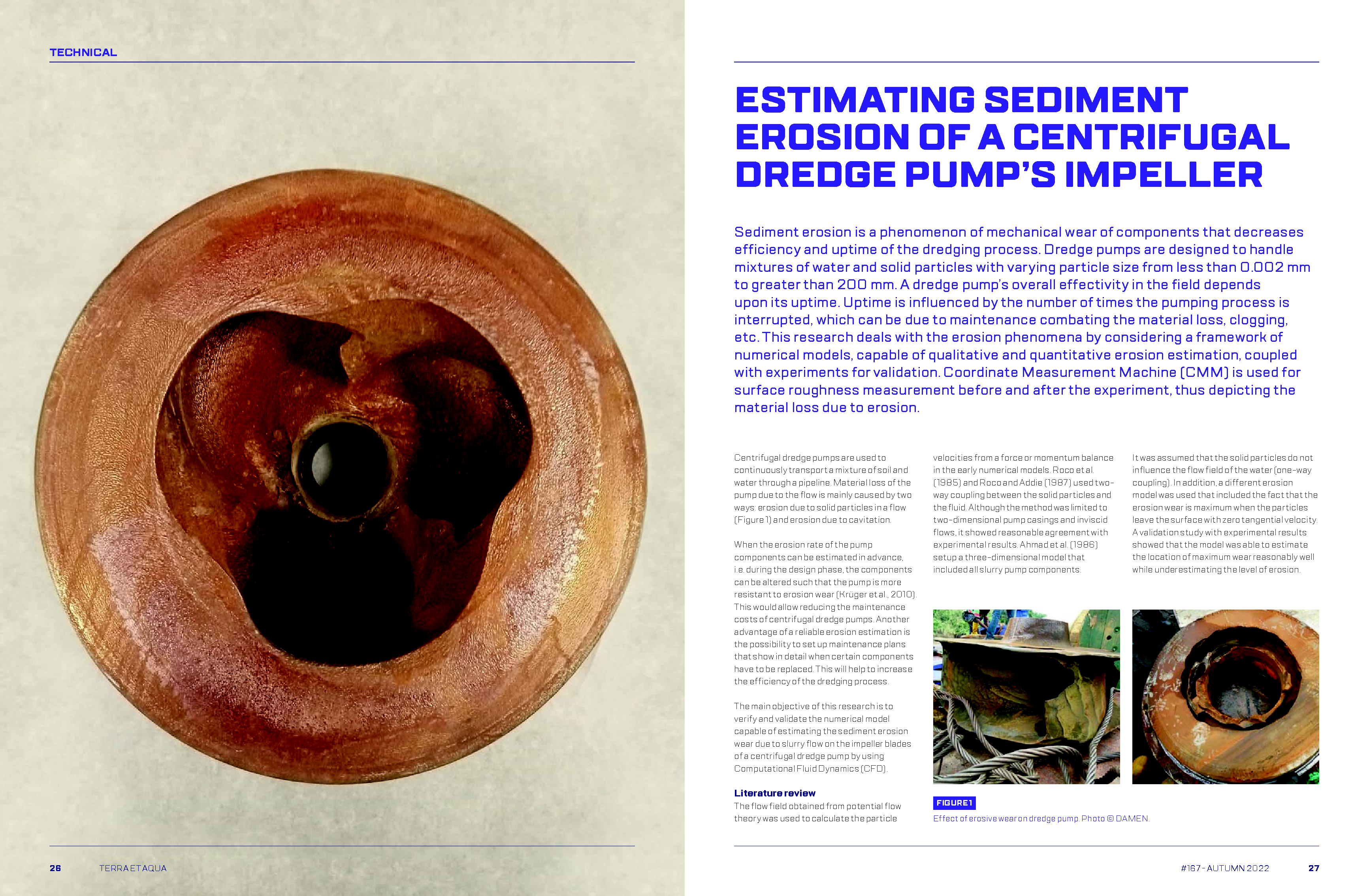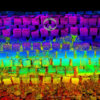Ahmad K., Baker R. C. and Goulas A. (1986)
Computation and experimental results of wear in a slurry pump impeller. Journal of Mechanical Engineering Science. 200(6): 439-445. doi.org/10.1243/PIME_PROC_1986_200_153_02
Andersson B., Andersson, R., Håkansson, L., Mortensen, M., Sudiyo, R., Wachem, B. Van. (2012)
Computational fluid dynamics for engineers. Cambridge University Press, Cambridge, UK.
ANSYS Inc. (2020a)
ANSYS Fluent theory guide. Canonsburg, PA, USA.
Celik I.B., Ghia U., Roache P.J., Freitas C.J., Coleman H. and Raad P.E. (2008)
Procedure for estimation and reporting of uncertainty due to discretization in CFD applications, Journal of Fluids Engineering, Vol. 130, no. 7.
Crowe C., Schwarzkopf J.D., Sommerfeld M. and Tsuji Y. (1998)
Multiphase flows with droplets and particles. CRC Press, Leiden, The Netherlands.
Finnie I. (1960)
Erosion of surfaces by solid particles. Wear, Volume 3, pp. 87-103.
Grant G. and Tabakoff W. (1975)
Erosion prediction in turbomachinery resulting from environmental solid particles. Journal of Aircraft, Volume 12, pp. 471-478.
Huang S., Huang J., Guo J. and Mo Y. (2019)
Study on wear properties of the flow parts in a centrifugal pump based on EDEM-Fluent coupling. Processes, p. 431.
Ilker P., and Sorgun M. (2020)
Performance of turbulence models for single phase and liquid-solid slurry flows in pressurized pipe systems. Ocean Engineering, Volume 214.
Keyence Corporation. (2021)
Coordinate measuring machines. Keyence Corporation, Osaka, Japan.
Krüger S., Martin N. and Dupont P. (2010)
Assessment of wear erosion in pump impellers. In proceedings of the 26th International Pump Users symposium. Winterhur, Switzerland.
Lai F., Zhu X., Xu X. and Li G. (2018)
Erosion wear and performance simulation of centrifugal pump for solid-liquid flow. In proceedings of the ASME 2018 POWER conference. Florida, USA.
Markus C. (2020)
Materiaaleigenschappen (Material properties). Bachelor’s thesis. Damen Dredging Equipment, Nijkerk, The Netherlands.
Menter E.R. (1994)
Two-equation eddy-viscosity turbulence models for engineering applications. AIAA Journal, 832(8).
Miska S. J. (2008)
Particle and fluid velocity measurements for viscous liquids in a direct impingement flow resulting in material erosion. Master’s thesis. University of Tusla, Tulsa, Oklahoma, USA.
Mitutoyo Corporation. (2021)
CRYSTA-APEX S. Mitutoyo, Kawasaki, Japan.
Nieuwstadt E.M., Boersma B.J. and Westerweel J. (2016)
Turbulence, Introduction to theory and applications of turbulent flows. Springer, Berlin, Germany.
Oka Y., Okamura K. and Yoshida T. (2005a)
Practical estimation of erosion damage caused by solid particle impact. Wear, 259 (Part 1: Effects of impact parameters on a predictive equation), pp. 95-101.
Oka Y., Okamura K. and Yoshida T. (2005b)
Practical estimation of erosion damage caused by solid particle impact. Wear, 259(Part 1: Mechanical properties of materials directly associated with erosion damage), pp. 102-109.
Roco M.C. and Addie G.R. (1987)
Erosion wear in slurry pumps and pipes. Powder Technology, 50(1), pp. 35-46.
Roco M.C., Addie G.R. and Visintainer R. (1985)
Study on casing performances in centrifugal slurry pumps. Particulate Science and Technology, Volume 3, pp. 65-88.
Sadighian A. (2016)
Investigating key parameters affecting slurry pipeline erosion. PhD thesis. University of Alberta, Edmonton, Alberta, Canada.
Sapkota S. (2018)
Technical and sustainability analysis of sediment erosion of impeller blades of dredge pumps. Master’s thesis. University of Twente, Enschede, The Netherlands.
Tarodiya R. and Gandhi B.K. (2017)
Hydraulic performance and erosive wear of centrifugal slurry pumps – A review. Powder Technology, Issue 305, pp. 27-38.
Tarodiya R. and Gandhi B.K. (2019)
Experimental investigation of centrifugal slurry pump casing wear handling solid-liquid mixtures. Wear, pp. 434-435.
Wang Q., Huang Q., Sun X., Karmi S. and Shirazi S.A. (2021)
Experimental and numerical evaluation of the effect of particle size on slurry erosion prediction. Journal of Energy Resources Technology, Volume 143.
Wang Y., and Wang W.J. (2012)
Applicability of eddy viscosity turbulence models in low specific speed centrifugal pump. In proceeding of 26th IAHR symposium on Hydraulic Machinery and Systems, Volume 15.
Xiao Y., Guo B., Ahn S.H., Luo Y., Wang Z., Shi G. and Li Y. (2019)
Slurry flow and erosion prediction in a centrifugal pump after long-term operation. Energies, p.1523.
Zhang Y., Reuterfors E.P., McLaury B.S., Shirazi S.A. and Rybicki E.E. (2007)
Comparison of computed and measured particle velocities and erosion in water and air flows. Wear, Volume 263, pp. 330-338.





















































